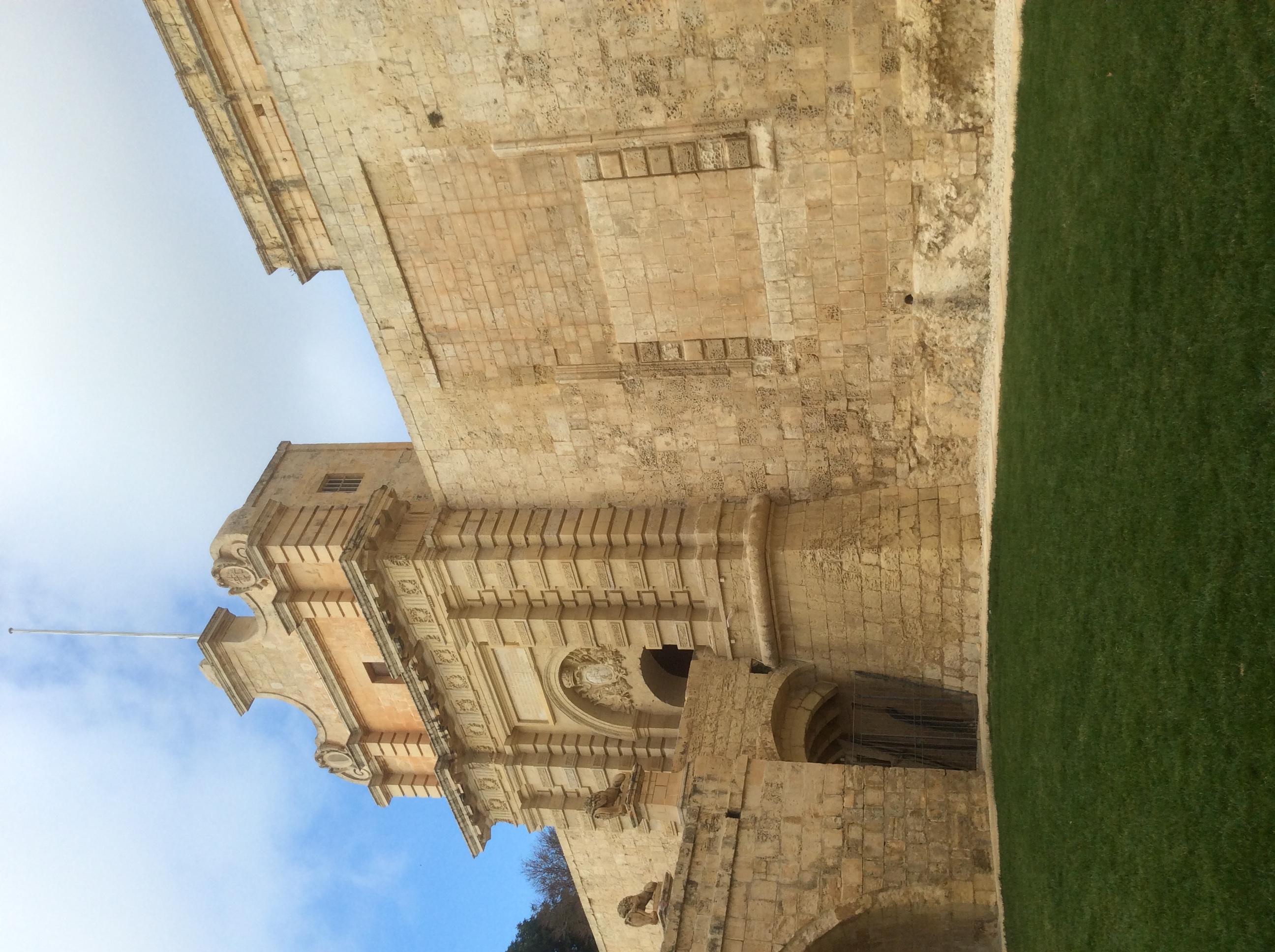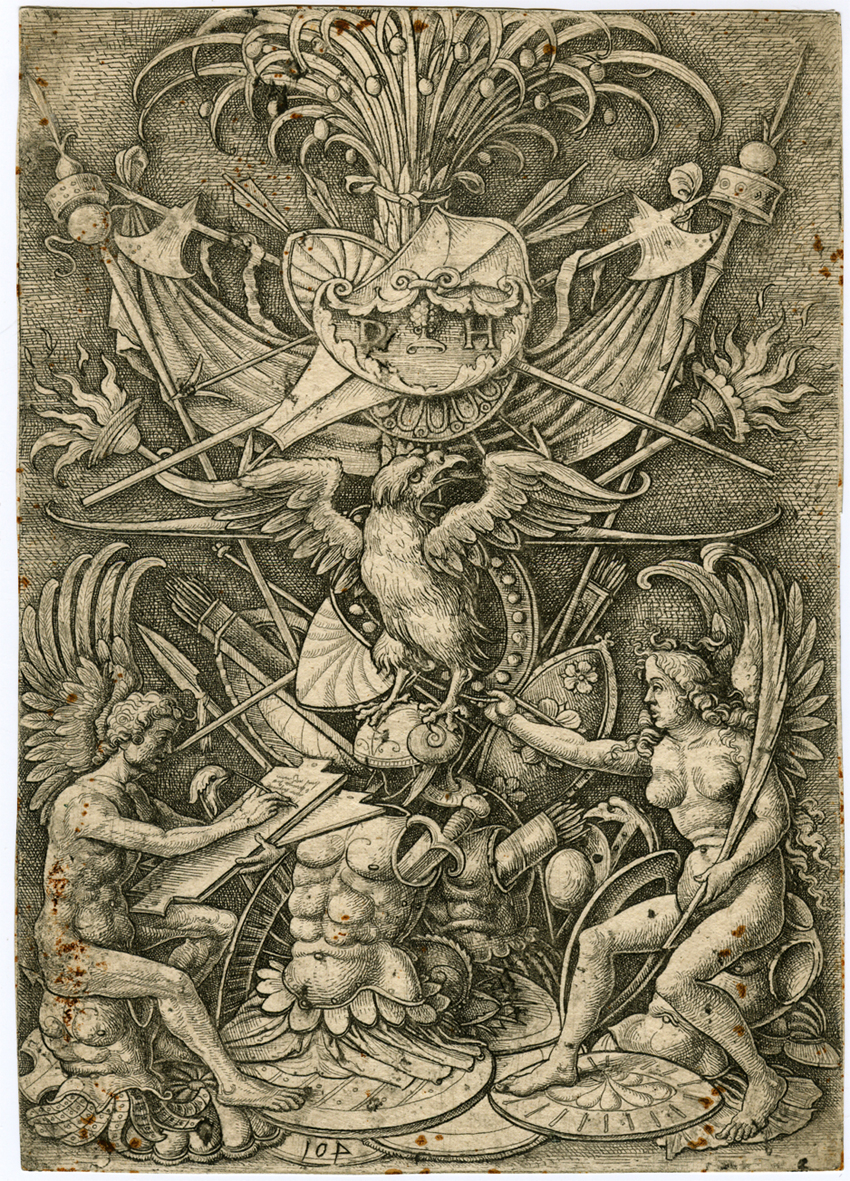|
Mdina Gate
Mdina Gate ( mt, Il-Bieb tal-Imdina), also known as the Main Gate or the Vilhena Gate, is the main gate into the fortified city of Mdina, Malta. It was built in the Baroque style in 1724 to designs of Charles François de Mondion, during the magistracy of Grand Master António Manoel de Vilhena. History The city of ''Maleth'' was founded by the Phoenicians in around 700 BC, and it later became part of the Roman Empire under the name Melite. The Punic-Roman city occupied all of present-day Mdina, and its walls also extended into part of Rabat. The city was reduced to its present size sometime during the early medieval period, either by the Byzantines or the Arabs. By the 15th century, the city (now known as Mdina) was defended by a system of double walls on the land front, with the main entrance being located close to the southeast corner of the city, near a tower known as the ''Turri Mastra''. In the medieval period, the main entrance to Mdina consisted of three gates whi ... [...More Info...] [...Related Items...] OR: [Wikipedia] [Google] [Baidu] |
City Gate
A city gate is a gate which is, or was, set within a city wall. It is a type of fortified gateway. Uses City gates were traditionally built to provide a point of controlled access to and departure from a walled city for people, vehicles, goods and animals. Depending on their historical context they filled functions relating to defense, security, health, trade, taxation, and representation, and were correspondingly staffed by military or municipal authorities. The city gate was also commonly used to display diverse kinds of public information such as announcements, tax and toll schedules, standards of local measures, and legal texts. It could be heavily fortified, ornamented with heraldic shields, sculpture or inscriptions, or used as a location for warning or intimidation, for example by displaying the heads of beheaded criminals or public enemies. Notably in Denmark, many market towns used to have at least one city gate mostly as part of the city's fortifications, but during ... [...More Info...] [...Related Items...] OR: [Wikipedia] [Google] [Baidu] |
Palazzo Vilhena
Vilhena Palace ( mt, Il-Palazz De Vilhena; it, Palazzo Vilhena), also known as the Magisterial Palace ( mt, Palazz Maġisterjali) and Palazzo Pretorio, is a French Baroque palace in Mdina, Malta. It is named after António Manoel de Vilhena, the Grand Master who commissioned it. It was built between 1726 and 1728 to designs of the French architect Charles François de Mondion, on the site of the meeting place of the Università. The palace was used a hospital in the 19th and 20th centuries, and it became known as Connaught Hospital after 1909. Since 1973, it has been open to the public as Malta's National Museum of Natural History. History Background and construction The site of Vilhena Palace has been inhabited since ancient times, and post-Punic remains have been found in the area. In around the 8th century, a Byzantine fort was probably built on the site, and in the Middle Ages it developed into a castle known as the ''Castellu di la Chitati''. The castle's inner walls w ... [...More Info...] [...Related Items...] OR: [Wikipedia] [Google] [Baidu] |
Paul The Apostle
Paul; grc, Παῦλος, translit=Paulos; cop, ⲡⲁⲩⲗⲟⲥ; hbo, פאולוס השליח (previously called Saul of Tarsus;; ar, بولس الطرسوسي; grc, Σαῦλος Ταρσεύς, Saũlos Tarseús; tr, Tarsuslu Pavlus; la, Paulus Tarsensis AD), commonly known as Paul the Apostle and Saint Paul, was a Christian apostle who spread the teachings of Jesus in the first-century world. Generally regarded as one of the most important figures of the Apostolic Age, he founded several Christian communities in Asia Minor and Europe from the mid-40s to the mid-50s AD. According to the New Testament book Acts of the Apostles, Paul was a Pharisee. He participated in the persecution of early disciples of Jesus, possibly Hellenised diaspora Jews converted to Christianity, in the area of Jerusalem, prior to his conversion. Some time after having approved of the execution of Stephen, Paul was traveling on the road to Damascus so that he might find any Christians ... [...More Info...] [...Related Items...] OR: [Wikipedia] [Google] [Baidu] |
Agatha Of Sicily
Agatha of Sicily () is a Christian saint. Her feast is on 5 February. Agatha was born in Catania, part of the Roman Province of Sicily, and was martyred . She is one of several virgin martyrs who are commemorated by name in the Canon of the Mass. Agatha is the patron saint of Catania, Molise, Malta, San Marino, Gallipoli in Apulia, and Zamarramala, a municipality of the Province of Segovia in Spain. She is also the patron saint of breast cancer patients, martyrs, wet nurses, bell-founders, and bakers, and is invoked against fire, earthquakes, and eruptions of Mount Etna. Early history Agatha is buried at the Badia di Sant'Agata, Catania. She is listed in the late 6th-century associated with Jerome, and the , the calendar of the church of Carthage, . Agatha also appears in one of the of Venantius Fortunatus. Two early churches were dedicated to her in Rome; Sant'Agata in via della Lugaretta, Trastevere, and notably the Church of Sant'Agata dei Goti in Via Mazzarino, a titu ... [...More Info...] [...Related Items...] OR: [Wikipedia] [Google] [Baidu] |
Saint Publius
Saint Publius ( mt, San Publju; grc-gre, Πούπλιος) is a first century Maltese bishop. He is venerated as the first Bishop of Malta and one of the first Bishops of Athens. Publius is Malta's first acknowledged saint, the prince of the island ( mt, il-prinċep tal-gżira). According to Maltese Christian tradition, Publius' conversion led to Malta being the first Christian nation in the West. His feast day is celebrated by the Roman Catholic Church and the Orthodox Church, of which the traditions related and the day of celebration differ. History and tradition According to Christian tradition, it was Publius who received Paul the Apostle during his shipwreck on the island as recounted in the Acts of the Apostles. According to the Acts of the Apostles, Paul cured Publius' dysentery-afflicted father. :''"In the vicinity of that place were lands belonging to a man named Publius, the chief of the island. He welcomed us and received us cordially as his guests for three days ... [...More Info...] [...Related Items...] OR: [Wikipedia] [Google] [Baidu] |
Trophy (architectural)
A trophy or trophy of arms in art and architecture is a real or depicted artistically assembled display of weaponry and other militaria, often captured from a defeated enemy, as an ornament designed for the purpose of triumphalist display by a victor or as a show of military prowess by a monarch. Similar decorative vertical arrangements of hunting accessories, musical instruments or other objects are also commonly referred to as trophies. The term comes from the ancient Greek ''tropaion'' and Roman equivalent ''tropaeum'', military victories which were commemorated with a display of actual captured arms, armour and standards. The use of trophies as an ornament in decoration became popular in the Italian Renaissance, and as an architectural element in relief or free-standing sculpture during the Baroque era, where they are often used as a kind of finial to decorate rooflines, gate columns and other elements of buildings with military associations, which included most royal pala ... [...More Info...] [...Related Items...] OR: [Wikipedia] [Google] [Baidu] |
Gatehouse
A gatehouse is a type of fortified gateway, an entry control point building, enclosing or accompanying a gateway for a town, religious house, castle, manor house, or other fortification building of importance. Gatehouses are typically the most heavily armed section of a fortification, to compensate for being structurally the weakest and the most probable attack point by an enemy. There are numerous surviving examples in France, Austria, Germany, England and Japan. History Gatehouses made their first appearance in the early antiquity when it became necessary to protect the main entrance to a castle or town. Over time, they evolved into very complicated structures with many lines of defence. Strongly fortified gatehouses would normally include a drawbridge, one or more portcullises, machicolations, arrow loops and possibly even murder-holes where stones would be dropped on attackers. In some castles, the gatehouse was so strongly fortified it took on the function of a keep, som ... [...More Info...] [...Related Items...] OR: [Wikipedia] [Google] [Baidu] |
Malta - Mdina - Pjazza San Publiju+Gate 01 Ies
Malta ( , , ), officially the Republic of Malta ( mt, Repubblika ta' Malta ), is an island country in the Mediterranean Sea. It consists of an archipelago, between Italy and Libya, and is often considered a part of Southern Europe. It lies south of Sicily (Italy), east of Tunisia, and north of Libya. The official languages are Maltese and English, and 66% of the current Maltese population is at least conversational in the Italian language. Malta has been inhabited since approximately 5900 BC. Its location in the centre of the Mediterranean has historically given it great strategic importance as a naval base, with a succession of powers having contested and ruled the islands, including the Phoenicians and Carthaginians, Romans, Greeks, Arabs, Normans, Aragonese, Knights of St. John, French, and British, amongst others. With a population of about 516,000 over an area of , Malta is the world's tenth-smallest country in area and fourth most densely populated sovereign cou ... [...More Info...] [...Related Items...] OR: [Wikipedia] [Google] [Baidu] |



.jpg)


.jpg)